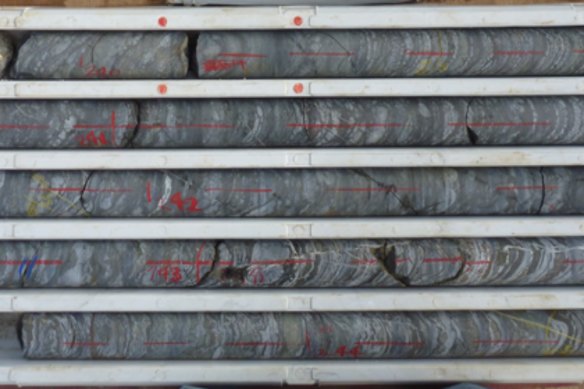
Lincoln Minerals has stamped a 1.2-billion-tonne magnetite resource going 25.7 per cent iron at its Green Iron project on South Australia’s Eyre Peninsula – prompting a share price jump of 27 per cent.
The graphite, magnetite and uranium explorer’s stock touched 0.7c during intraday trading after a previous close of 0.55c, with more than 12.5 million shares changing hands – representing its biggest trading day since January.

Drilling at Lincoln Minerals’ Green Iron project has delivered assays up to 33.63 per cent iron.
Management says its recent portfolio review validated the magnetite resource and highlighted the potential for entering a partnership to develop its 100 per cent-owned Green Iron project. It believes current industry trends and increases in demand for high-quality magnetite concentrates to support steel industry decarbonisation suggest that interest for a project of Green Iron’s scale and product quality could be renewed.
Lincoln says there is increasing acceptance of high-quality magnetite as a feedstock into direct-reduced iron (DRI) for “green steel” production, which has the potential to substantially decarbonise the steel manufacturing process. DRI steelmaking, which does not use coal and has potential to be based on green hydrogen, requires a significant supply of high-grade iron ore, for which the more commonly-known hematite-goethite iron ores found in the Pilbara region of Western Australia are generally unsuitable.
With diminishing discoveries and a dwindling supply of haematite-based iron ore resources in recent times, the market may soon look to lower-grade magnetite resources to fill the supply gap. A string of billionaire heavy-hitters including Andrew Forrest, Gina Rinehart and Mineral Resources’ Chris Ellison have all recently expressed significant interest in the magnetite space, which no doubt shows there is a demand for the commodity.
“Magnetite, with its environmental advantages, has emerged as an appealing option for sustainable, low carbon steel production.”
Lincoln Minerals chief executive officer Jonathon Trewartha
Management believes the potential demand for high-quality magnetite feedstock is expected to increase substantially in the medium to longer term.
Previous drilling at the Green Iron project delivered assays of up to 33.63 per cent iron. The company says its magnetite resources estimates feature strong profiles including average concentrate grades of 66.4 per cent iron 5 per cent silicone dioxide.
Lincoln Minerals chief executive officer Jonathon Trewartha said: “Magnetite, with its environmental advantages, has emerged as an appealing option for sustainable, low carbon steel production. Lincoln’s Green Iron Project, focused on producing a coarse-grind, high-grade iron ore concentrate, is expected to attract interest from potential steel producers, as has been the case with other peers in the region. The project’s unique properties, positive environmental impact, and proximity to established infrastructure and workforce contribute significantly to the project’s attractiveness.”









 Add Category
Add Category